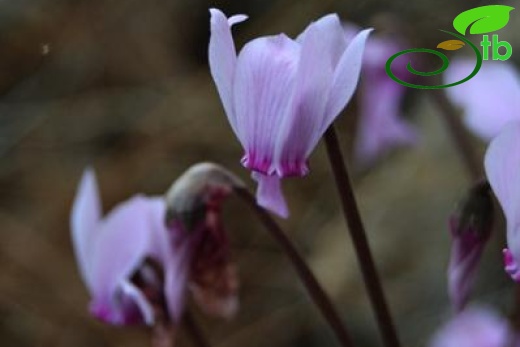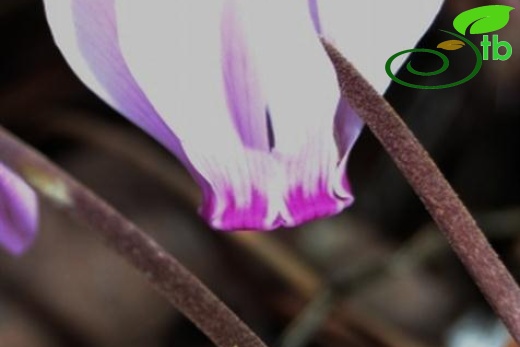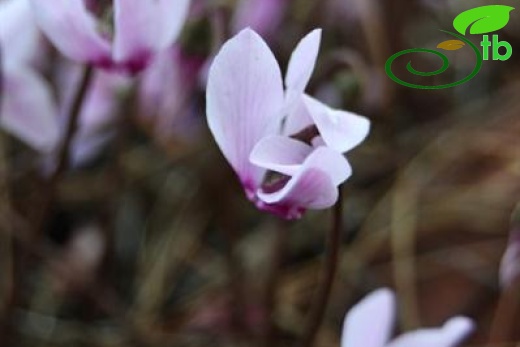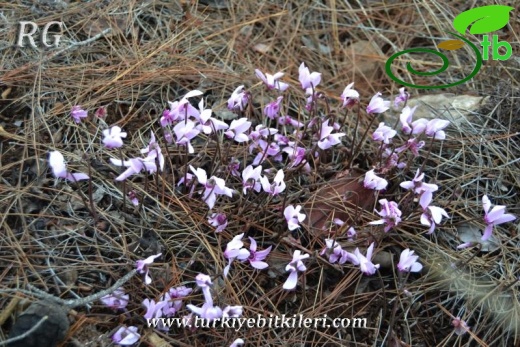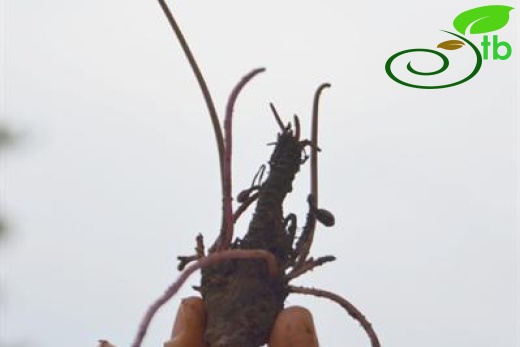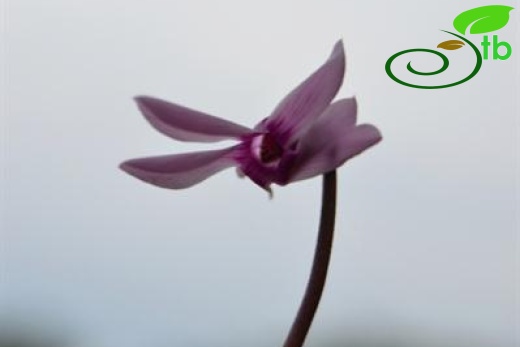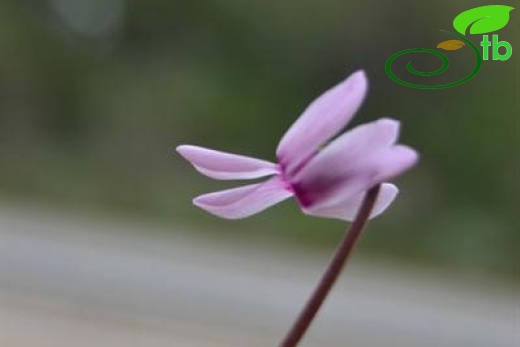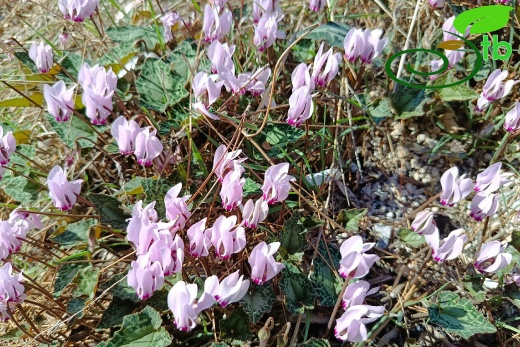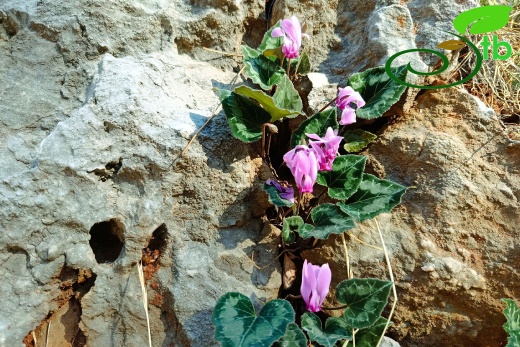Cyclamen graecum
Cyclamen graecum
Domuztopalağı
Tuber globose or subglobose, fissured, corky; roots springing from centre of lower surface, thickened, retractile. Leaves appearing a little after flowers in late summer and autumn, cordate or rarely somewhat angled, 3-14 cm long and about as wide, margins slightly thickened and cartilaginous, closely denticulate. Corolla pale pink; rarely white, lobes c. 2 cm, auriculate at base and marked with dark crimson, bifurcate or trifurcate streaks. Style very shortly exserted. Fruiting pedicel coiling irregularly from middle or base. Fl. 9-11. Pinus brutia forest, clefts of limestone rocks, Quercus macchie, s.l.-100 m.
Greece, Aegean, Cyprus. E. Medit. element.
Ssp anatolicum
Similar to subsp. graecum but differing from it by having small. slender and usually sweet-scented flowers; auricles present to slightly developed and basal blotch compact. Fl. 10. In Pinus brutia and Cupressus woodland. sandy and rocky places or along streams. c. 0-600 m.
N. Cyprus and SE. Aegean Islands.
subsp. anatolicum- Alanya
Ahmet Tıraş
subsp. anatolicum- Alanya
Ahmet Tıraş
subsp. anatolicum- Alanya
Ahmet Tıraş


